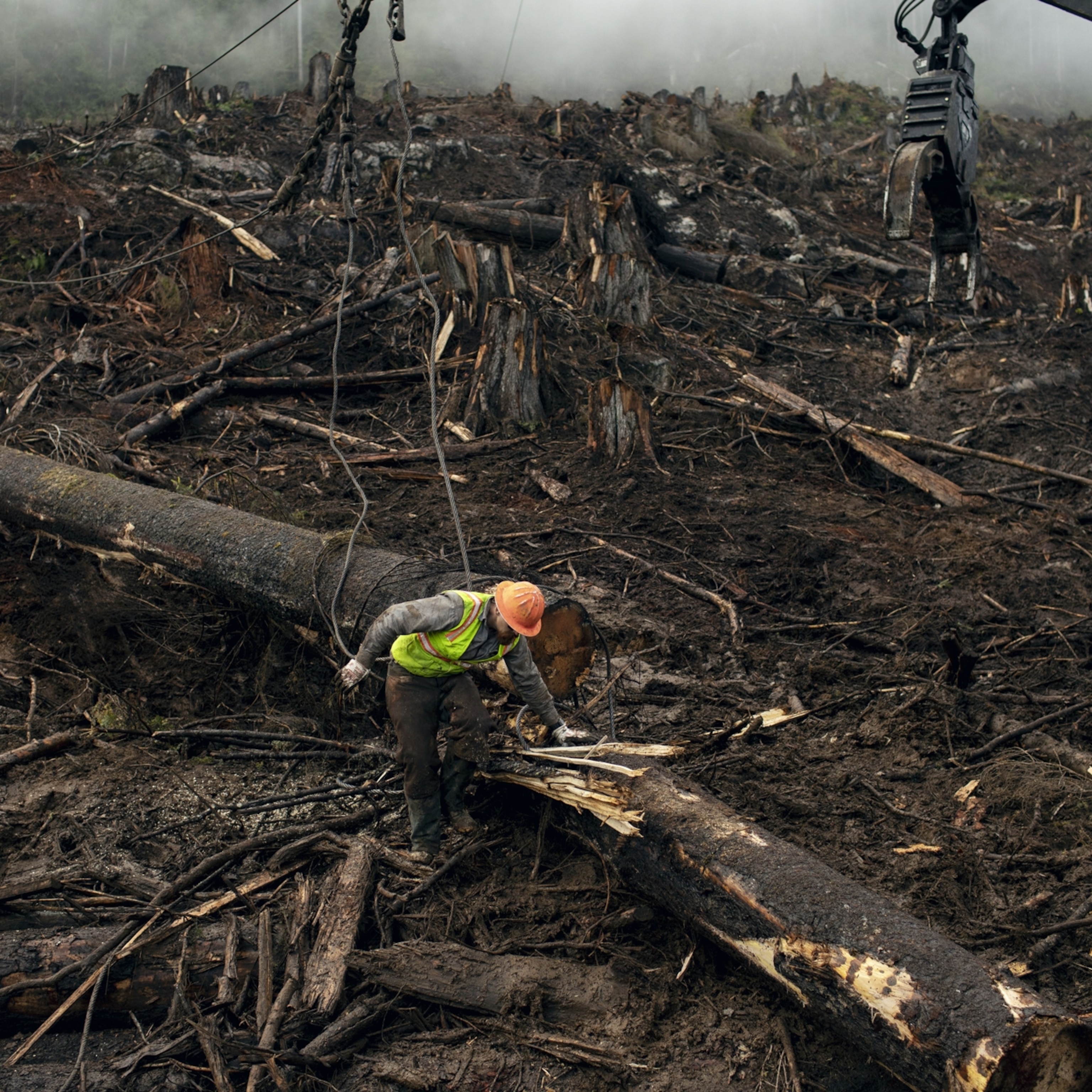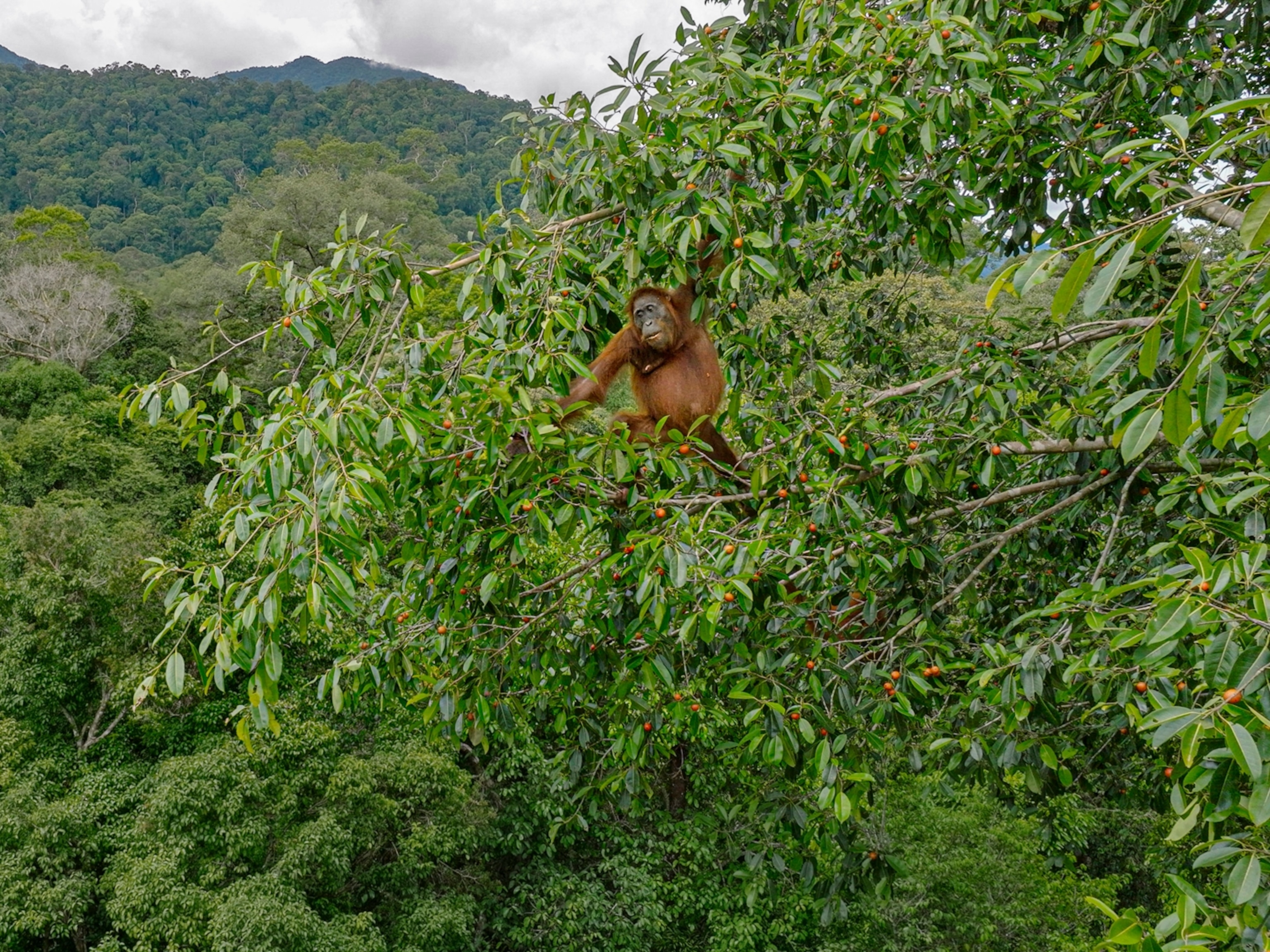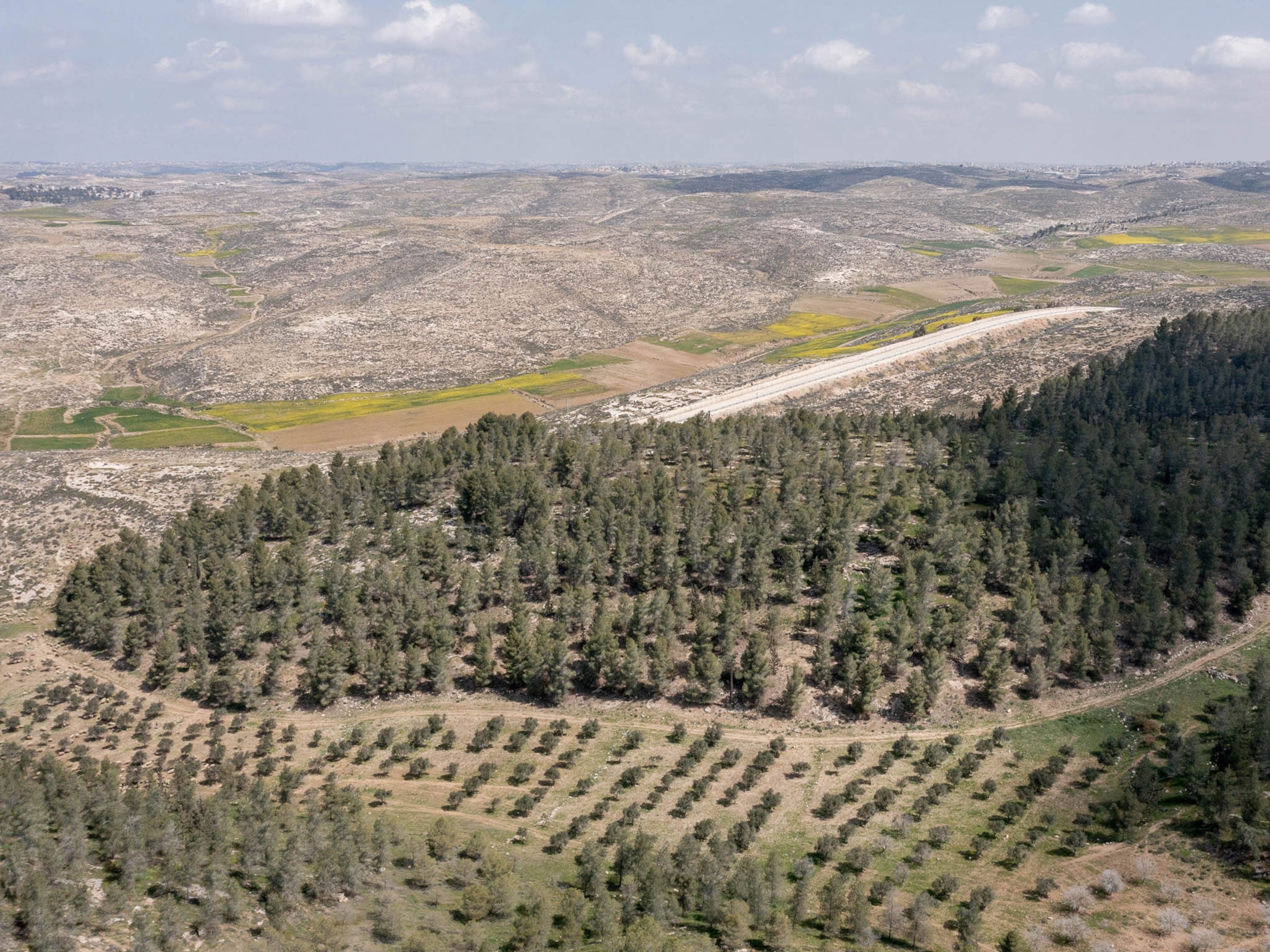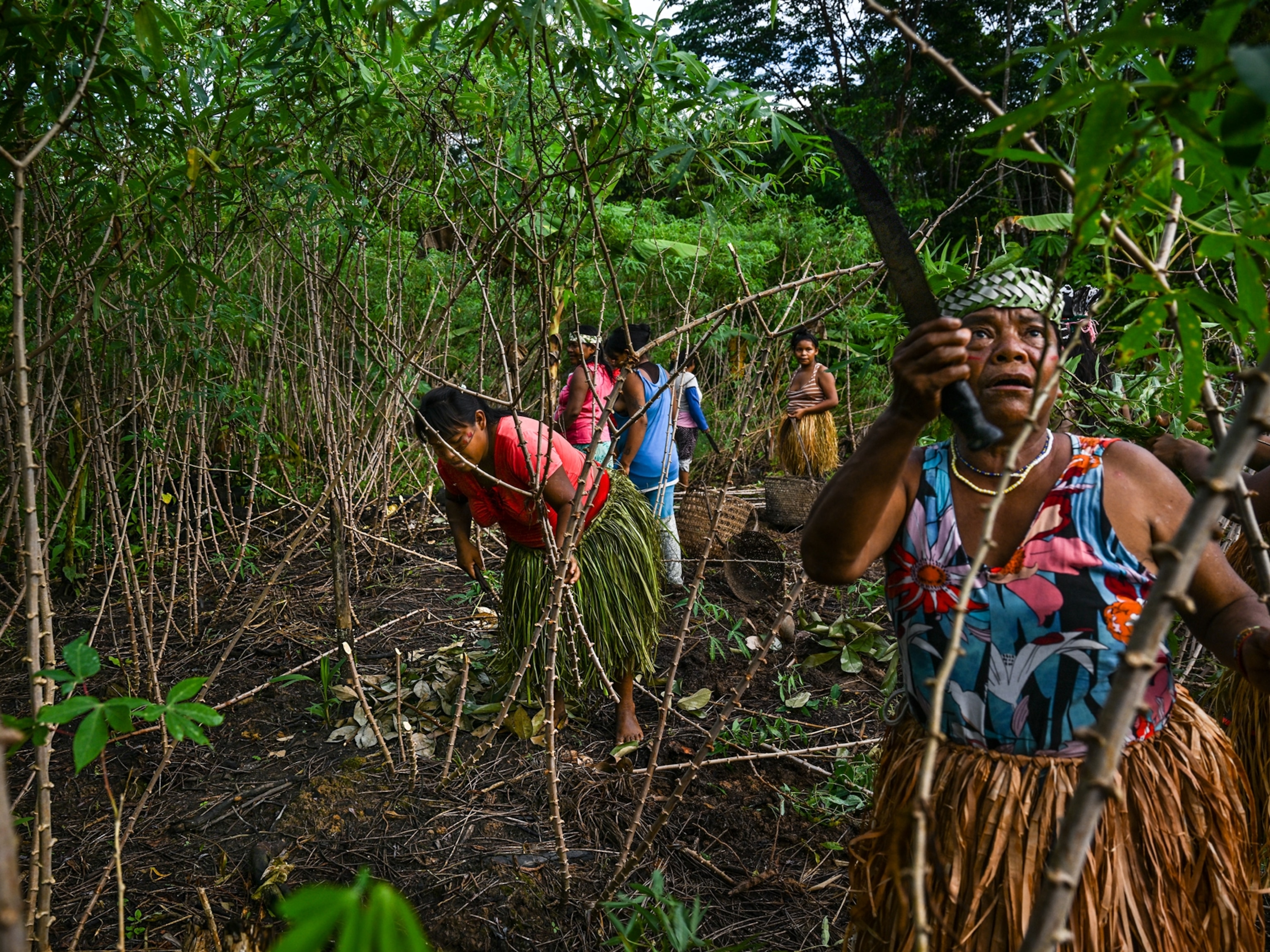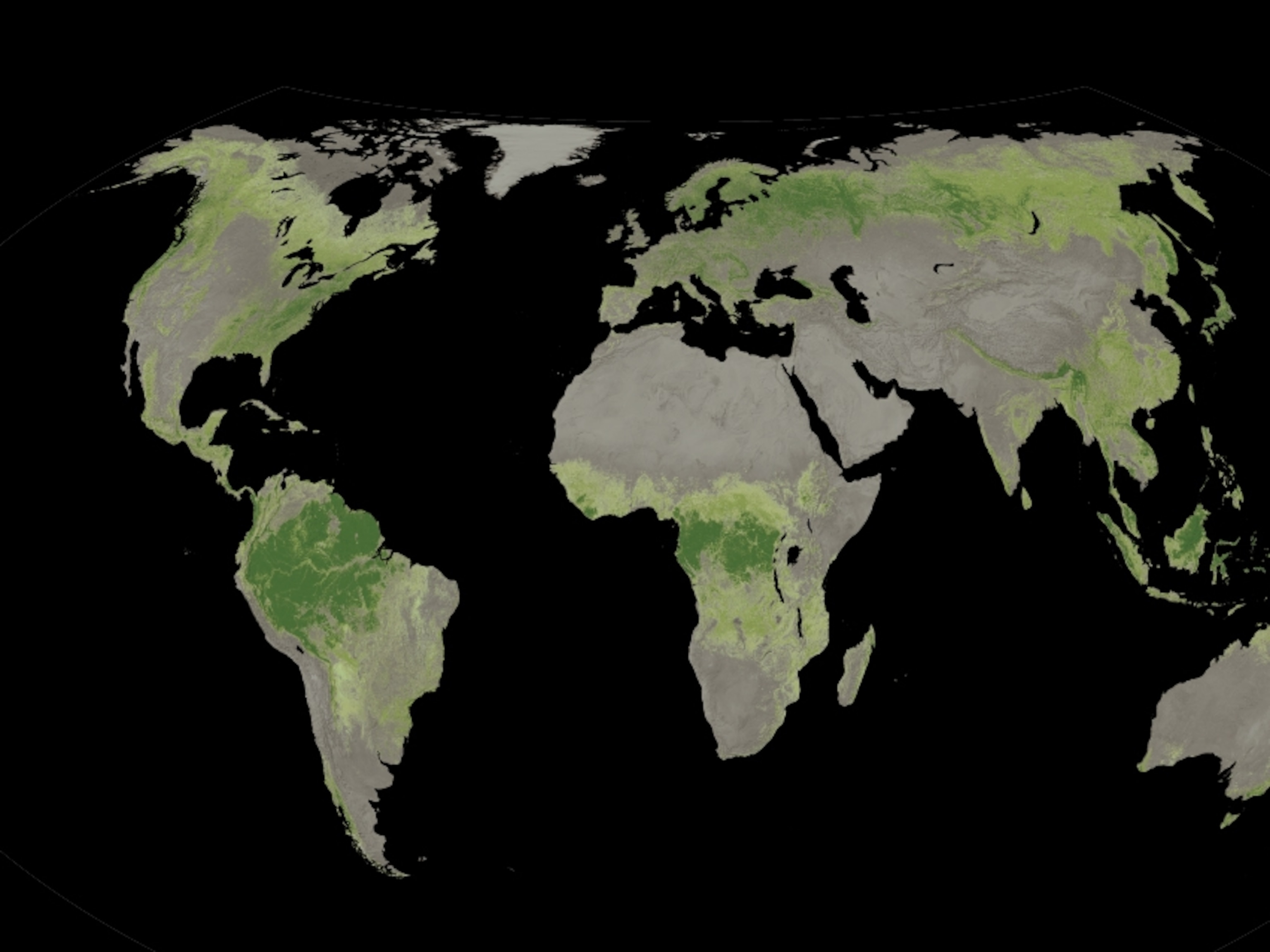Why deforestation matters—and what we can do to stop it
Large scale destruction of trees—deforestation—affects ecosystems, climate, and even increases risk for zoonotic diseases spreading to humans.
As the world seeks to slow the pace of climate change, preserve wildlife, and support more than eight billion people, trees inevitably hold a major part of the answer. Yet the mass destruction of trees—deforestation—continues, sacrificing the long-term benefits of standing trees for short-term gain of fuel, and materials for manufacturing and construction.
We need trees for a variety of reasons, not least of which is that they absorb the carbon dioxide we exhale and the heat-trapping greenhouse gases that human activities emit. As those gases enter the atmosphere, global warming increases, a trend scientists now prefer to call climate change.
There is also the imminent danger of disease caused by deforestation. An estimated 60 percent of emerging infectious diseases come from animals, and a major cause of viruses’ jump from wildlife to humans is habitat loss, often through deforestation.
But we can still save our forests. Aggressive efforts to rewild and reforest are already showing success. Tropical tree cover alone can provide 23 percent of the climate mitigation needed to meet goals set in the Paris Agreement in 2015, according to one estimate.











Causes of deforestation
Forests still cover about 30 percent of the world’s land area, but they are disappearing at an alarming rate. Since 1990, the world has lost more than 420 million hectares or about a billion acres of forest, according to the Food and Agriculture Organization of the United Nations—mainly in Africa and South America. About 17 percent of the Amazonian rainforest has been destroyed over the past 50 years, and losses recently have been on the rise. The organization Amazon Conservation reports that destruction rose by 21 percent in 2020, a loss the size of Israel.
Farming, grazing of livestock, mining, and drilling combined account for more than half of all deforestation. Forestry practices, wildfires and, in small part, urbanization account for the rest. In Malaysia and Indonesia, forests are cut down to make way for producing palm oil, which can be found in everything from shampoo to saltine crackers. In the Amazon, cattle ranching and farms—particularly soy plantations—are key culprits.
Logging operations, which provide the world’s wood and paper products, also fell countless trees each year. Loggers, some of them acting illegally, also build roads to access more and more remote forests—which leads to further deforestation. Forests are also cut as a result of growing urban sprawl as land is developed for homes.
Not all deforestation is intentional. Some is caused by a combination of human and natural factors like wildfires and overgrazing, which may prevent the growth of young trees.
Why it matters
There are some 250 million people who live in forest and savannah areas and depend on them for subsistence and income—many of them among the world’s rural poor.
Eighty percent of Earth’s land animals and plants live in forests, and deforestation threatens species including the orangutan, Sumatran tiger, and many species of birds. Removing trees deprives the forest of portions of its canopy, which blocks the sun’s rays during the day and retains heat at night. That disruption leads to more extreme temperature swings that can be harmful to plants and animals.
With wild habitats destroyed and human life ever expanding, the line between animal and human areas blurs, opening the door to zoonotic diseases. In 2014, for example, the Ebola virus killed over 11,000 people in West Africa after fruit bats transmitted the disease to a toddler who was playing near trees where bats were roosting.
(How deforestation is leading to more infectious diseases in humans.)
Some scientists believe there could be as many as 1.7 million currently “undiscovered” viruses in mammals and birds, of which up to 827,000 could have the ability to infect people, according to a 2018 study.
Deforestation’s effects reach far beyond the people and animals where trees are cut. The South American rainforest, for example, influences regional and perhaps even global water cycles, and it's key to the water supply in Brazilian cities and neighboring countries. The Amazon actually helps furnish water to some of the soy farmers and beef ranchers who are clearing the forest. The loss of clean water and biodiversity from all forests could have many other effects we can’t foresee, touching even your morning cup of coffee.
In terms of climate change, cutting trees both adds carbon dioxide to the air and removes the ability to absorb existing carbon dioxide. If tropical deforestation were a country, according to the World Resources Institute, it would rank third in carbon dioxide-equivalent emissions, behind China and the U.S.
What can be done
The numbers are grim, but many conservationists see reasons for hope. A movement is under way to preserve existing forest ecosystems and restore lost tree cover by first reforesting (replanting trees) and ultimately rewilding (a more comprehensive mission to restore entire ecosystems).
(Which nation could be the first to be rewilded?)
Organizations and activists are working to fight illegal mining and logging—National Geographic Explorer Topher White, for example, has come up with a way to use recycled cell phones to monitor for chainsaws. In Tanzania, the residents of Kokota have planted more than 2 million trees on their small island over a decade, aiming to repair previous damage. And in Brazil, conservationists are rallying in the face of ominous signals that the government may roll back forest protections.
(Which tree planting projects should you support?)
Stopping deforestation before it reaches a critical point will play a key role in avoiding the next zoonotic pandemic. A November 2022 study showed that when bats struggle to find suitable habitat, they travel closer to human communities where diseases are more likely to spillover. Inversely, when bats’ native habitats were left intact, they stayed away from humans. This research is the first to show how we can predict and avoid spillovers through monitoring and maintaining wildlife habitats.
For consumers, it makes sense to examine the products and meats you buy, looking for sustainably produced sources when you can. Nonprofit groups such as the Forest Stewardship Council and the Rainforest Alliance certify products they consider sustainable, while the World Wildlife Fund has a palm oil scorecard for consumer brands.
You May Also Like
Go Further
Animals
- How can we protect grizzlies from their biggest threat—trains?How can we protect grizzlies from their biggest threat—trains?
- This ‘saber-toothed’ salmon wasn’t quite what we thoughtThis ‘saber-toothed’ salmon wasn’t quite what we thought
- Why this rhino-zebra friendship makes perfect senseWhy this rhino-zebra friendship makes perfect sense
- When did bioluminescence evolve? It’s older than we thought.When did bioluminescence evolve? It’s older than we thought.
- Soy, skim … spider. Are any of these technically milk?Soy, skim … spider. Are any of these technically milk?
Environment
- Are the Great Lakes the key to solving America’s emissions conundrum?Are the Great Lakes the key to solving America’s emissions conundrum?
- The world’s historic sites face climate change. Can Petra lead the way?The world’s historic sites face climate change. Can Petra lead the way?
- This pristine piece of the Amazon shows nature’s resilienceThis pristine piece of the Amazon shows nature’s resilience
- Listen to 30 years of climate change transformed into haunting musicListen to 30 years of climate change transformed into haunting music
History & Culture
- Meet the original members of the tortured poets departmentMeet the original members of the tortured poets department
- Séances at the White House? Why these first ladies turned to the occultSéances at the White House? Why these first ladies turned to the occult
- Gambling is everywhere now. When is that a problem?Gambling is everywhere now. When is that a problem?
- Beauty is pain—at least it was in 17th-century SpainBeauty is pain—at least it was in 17th-century Spain
Science
- Here's how astronomers found one of the rarest phenomenons in spaceHere's how astronomers found one of the rarest phenomenons in space
- Not an extrovert or introvert? There’s a word for that.Not an extrovert or introvert? There’s a word for that.
- NASA has a plan to clean up space junk—but is going green enough?NASA has a plan to clean up space junk—but is going green enough?
- Soy, skim … spider. Are any of these technically milk?Soy, skim … spider. Are any of these technically milk?
Travel
- How to see Mexico's Baja California beyond the beachesHow to see Mexico's Baja California beyond the beaches
- Could Mexico's Chepe Express be the ultimate slow rail adventure?Could Mexico's Chepe Express be the ultimate slow rail adventure?

